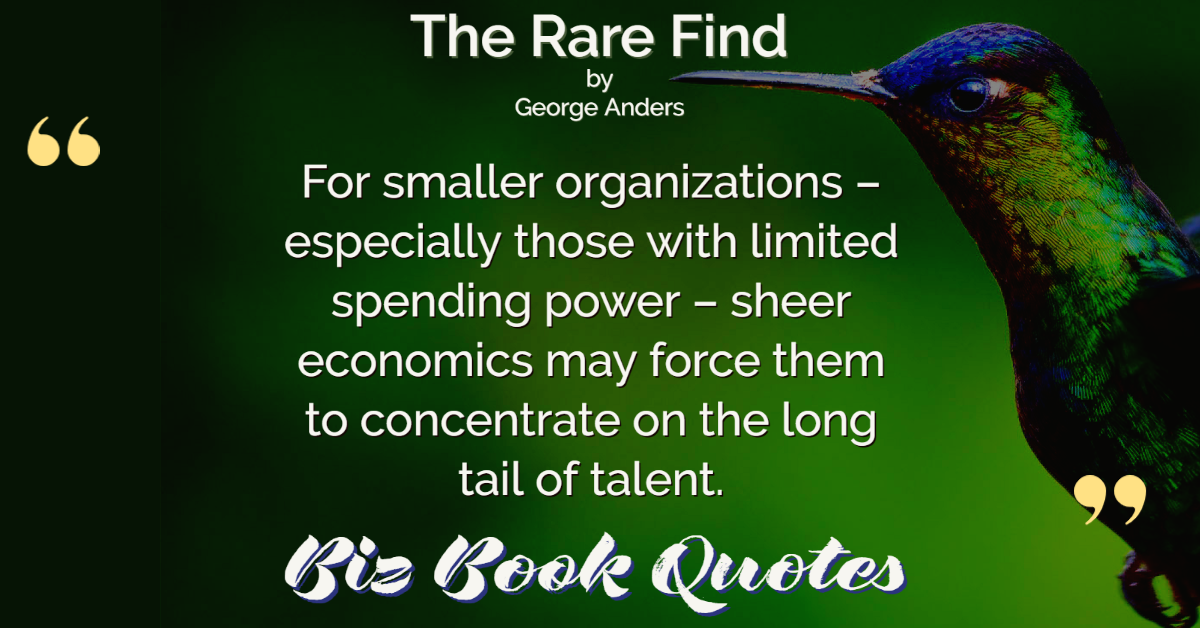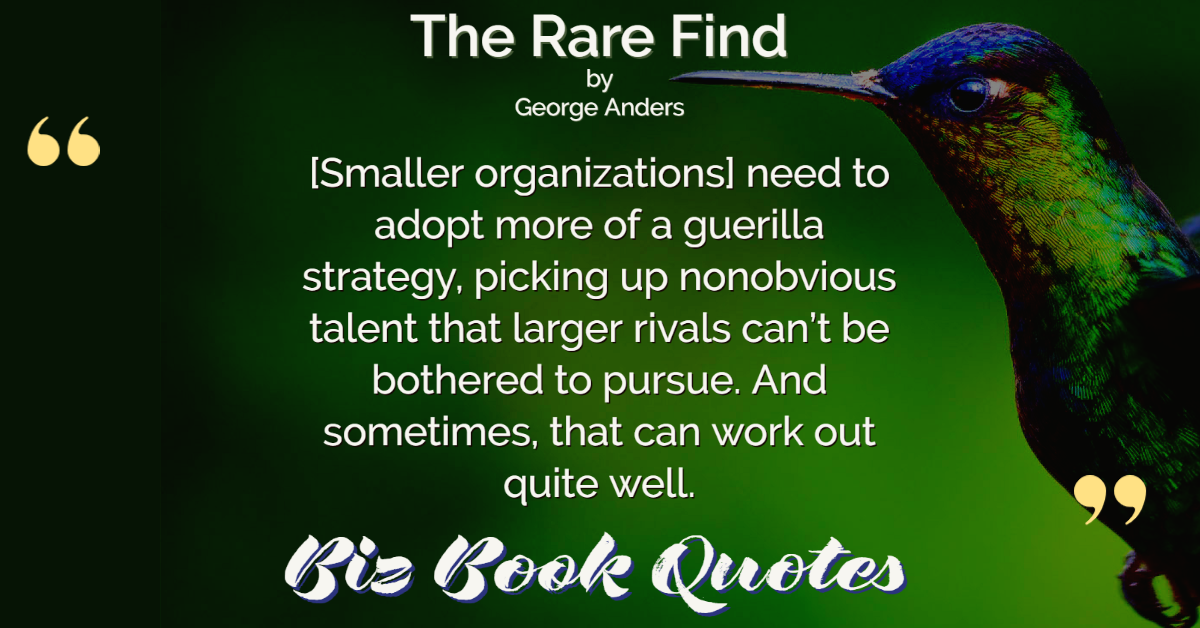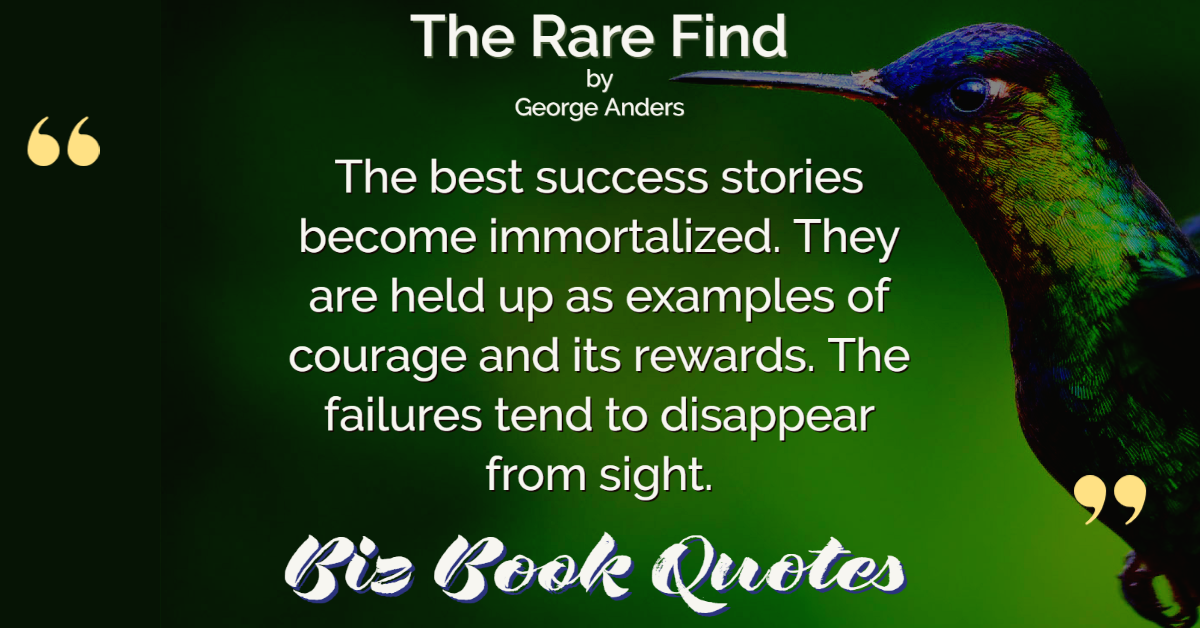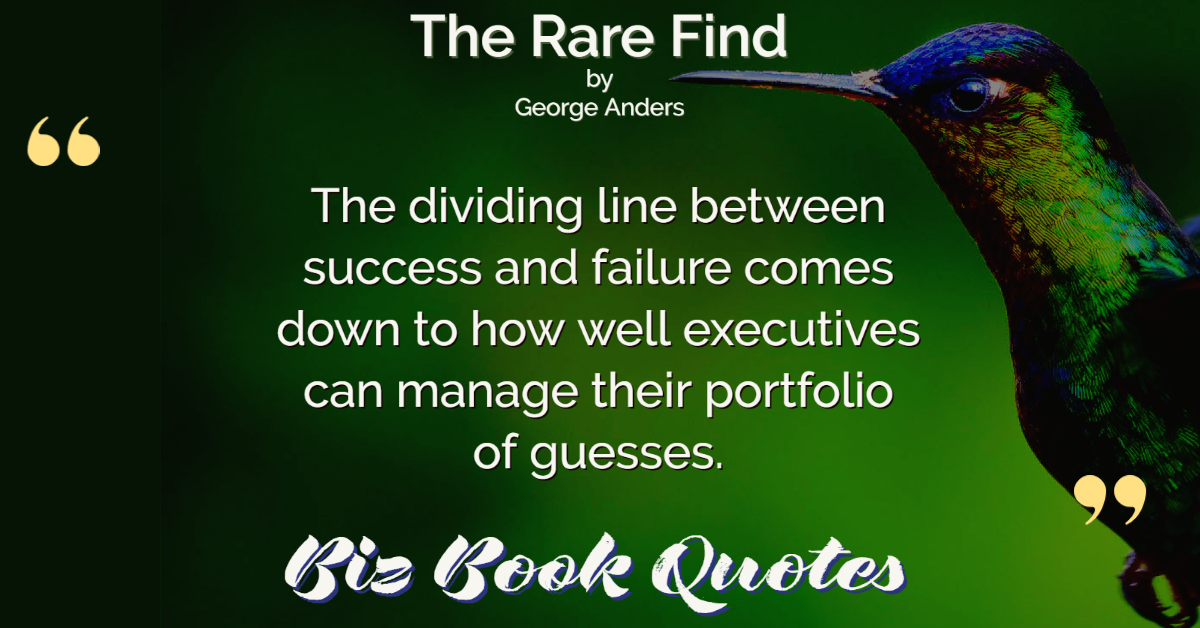|

|
The Rare Find:
For smaller organizations – especially those with limited spending power – sheer economics may force them to concentrate on the long tail of talent.
|
134 |
|

|
The Rare Find:
[Smaller organizations] need to adopt more of a guerilla strategy, picking up nonobvious talent that larger rivals can’t be bothered to pursue. And sometimes, that can work out quite well.
|
134 |
|

|
The Rare Find:
…it’s possible for a few high-energy optimists to get everyone else thinking about new paths – and what can go right – rather than being governed by apprehensions about what could go wrong.
|
140 |
|

|
The Rare Find:
There is a powerful benefit to this strategy of opening the doors wide at first, and then getting picky as newcomers reveal their full strengths and limits.
|
147 |
|

|
The Rare Find:
It’s hard… to step away from our usual concerns about loss aversion and to think instead about what can go right.
|
150 |
|

|
The Rare Find:
…at the moments when assessors must decide on someone’s potential, listening for clues about what could go right can be as delicate as trying to pick up baby’s heartbeat through the muffled layers of heavy winter clothing.
|
152 |
|

|
The Rare Find:
The best success stories become immortalized. They are held up as examples of courage and its rewards. The failures tend to disappear from sight.
|
152 |
|

|
The Rare Find:
The dividing line between success and failure comes down to how well executives can manage their portfolio of guesses.
|
161 |
|

|
The Rare Find:
If bells went off every time someone amazing walked into sight, it wouldn’t be hard at all to recognize the first stirrings of greatness.
|
163 |
|

|
The Rare Find:
The great art lies in being open-minded enough to see faint possibilities at first, and then being methodical enough to keep coming back for more impressions, until the full picture is clear.
|
163 |











